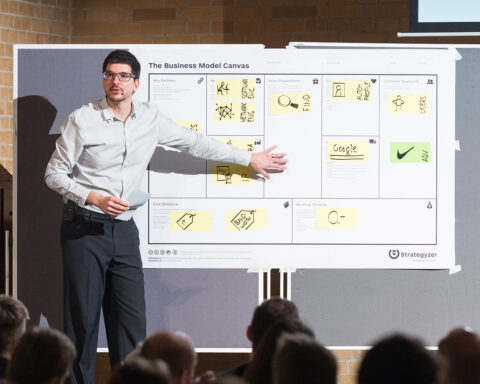Making Deals Successful
Why do certain transactions pay off and others don’t? Is integration success blind luck or a manageable and transparent process? These were the questions we wanted to answer when we launched the 3rd edition of our survey on M&A integration. We interviewed M&A experts who realized deals from a wide range of industries in order to explore the trends, challenges and triggers of M&A integration in a rapidly changing deals environment.
We found some bad news and some good news. The good news first: Our survey demonstrates that acquirers usually have a clear vision for the merged companies. Another positive finding: Value-creation methods in transactions are constantly evolving. Now to the bad news: In practice, many deal-makers still underestimate the time and effort a synergy-offering integration process will take.
Laying the foundations for a successful deal
Why do companies decide to buy a competitor or merge with another firm? The participants in our survey stated strategic, financial and synergy objectives as their most important success factors. When it comes to strategic objectives our survey results are encouraging: Those goals are often achieved. When it comes to generating synergies, however, many companies have room for improvement.
Buyers generally focus on “external growth” as their main strategic transaction objective. The prospect of integrating new products into their portfolios and the desire for new customers are the main strategic drivers for deals. And in many cases, deal-makers achieve those objectives. This is hardly surprising, as strategic objectives are often met the moment the deal is closed and do not need further integration efforts. To reach new levels of strategic and operational excellence, however, buyers need to undertake distinct actions post-deal.
Achieving financial objectives seems a lot harder than meeting strategic goals. According to our survey, the most important financial success factors are sales and profitability. More than half of all respondents indicated that they only partially achieved set targets or did not achieve them at all. This finding shows that building a combined company alone does not increase profitability – one has to change and optimize processes, systems and structures. In order to boost sales, one needs to be aware of cannibalization effects within the newly-combined product portfolios and increased needs to achieve cross-selling potential.
The path to success: Detailed planning, stringent execution and constant monitoring
Many integration activities are planned pre-deal but are not actually approached during the integration. Our survey results show that management commitment and sponsorship are planned initially, but are often not fully implemented. The same holds true for a clear project structure or setup, responsibilities and governance. In order to make a deal successful it is very important to focus on your individual value-drivers.
The vast majority of deal-makers start their integration planning before signing during due diligence, allowing them to thoroughly plan and prepare all of the integration activities necessary to perform a transition. However, most companies underestimate the overall time needed for integration with a delay of approximately six months. For the majority of managers we spoke with, it took between seven and 18 months post-closing to complete their integration activities.
Understanding the complexity of integration
So what is it that makes integration so complex? Two-thirds of respondents (67%) report that the greatest complexity stems from “complex (legal) structures”. 64% mention “cross-border integration” as the most complex hurdle, followed by “complex business models of the integration parties” (58%) and “cultural differences” (56%) as more and more deals are completed on the Asian market. Multinational teams of experts are required to successfully overcome these challenges.
Diligence makes the difference
Clients sometimes ask me: What is the first thing to be completed during the transaction process? The answer is simple- a thorough due diligence. Future success depends on getting a comprehensive picture of what you are buying. Most deal-makers are aware of this. More than 90% of respondents either extensively or selectively used the results of the due diligence post-closing. Four in five respondents started to develop integration and synergy plans during the due diligence process.
What gets measured gets done
Every deal-maker should use ongoing and frequent tracking to measure success during integration. The most commonly used financial-based metrics are profitability, revenue development and one-off integration process costs. I recommend that companies also use non-financial success metrics such as employee satisfaction and fluctuation or customer satisfaction to measure the success of their integration. Our survey shows that the best-performing deal-makers concentrate more on the “people-side” of the deal and focus on customer and employee satisfaction rather than on financial-based factors.
Another important issue to consider is whether it makes sense to use external consultants to support integration. Only a small minority of deal-makers plan for professional support upfront. From my experience, however, companies that do not rely on external advisors often face problems during the integration process due to a lack of experience with deals and integration. Among the most-requested consultancy services are professional integration management and support with finance and accounting functions, operating models and IT.
Customized approaches are required to integrate different functions
Deal-makers often focus on support and administrative functions, such as finance and IT, when conducting integration activities. Support functions generally require shorter timeframes for integration. It is far more challenging, however, to integrate value-adding processes that cause fundamental structural changes within the organization. Integrating core processes such as research and development, sales, and production will also require more time. When it comes to integrating different functions, deal-makers have to be aware that a “one-size-fits-all” approach does not lead to ideal results.
IT presents a particular integration challenge. Harmonizing and integrating the IT infrastructure and landscape can take longer than any other business process. In my experience, it can require a company several years to fully harmonize the IT functions of two merged companies.
The rocky road to synergy realization
Our study reveals a discrepancy between the relevance of synergies as a success factor for transactions and the actual achievement of the desired synergies. More than three-quarters of respondents say synergies are a success factor, yet less than half claim they achieved them. The vast majority of acquirers – 96% of the deal-makers we interviewed – even pay a premium for target companies because they expect synergies.
In practice, however, many companies not only fail to obtain the synergies they had in mind, in the worst-case scenario they even suffer from dissynergies, with costs increasing instead of falling. Employees are dissatisfied with the working atmosphere and leave the company, rather than being motivated by new opportunities and challenges.
So why is it that so many deal-makers fail to reach planned synergies? Is it poor planning or inappropriate measures? Slow execution or frictional losses? I think it is probably a mixture of all of these factors. Synergies usually don’t just happen. Their achievement has to be planned thoroughly in advance, ideally during the pre-deal phase and certainly before signing. The way synergies are planned in the pre-deal phase is crucial to the extent to which they are achieved afterwards.
Patience will pay off
We find deal-makers to be far too optimistic in estimating when synergies will take effect. A time delay of six months in synergy realization is the rule. Most respondents are able to realize their planned synergies between 13 and 18 months post-closing.
Also, it takes many organizational and structural changes to achieve positive effects and even longer until these are reflected in the company’s finances. Our survey indicates that synergies are usually strongest in core processes such as sales, procurement and production. In these functions it is more difficult to realize ‘quick wins’, but once synergies are achieved, they have the greatest financial impact.










